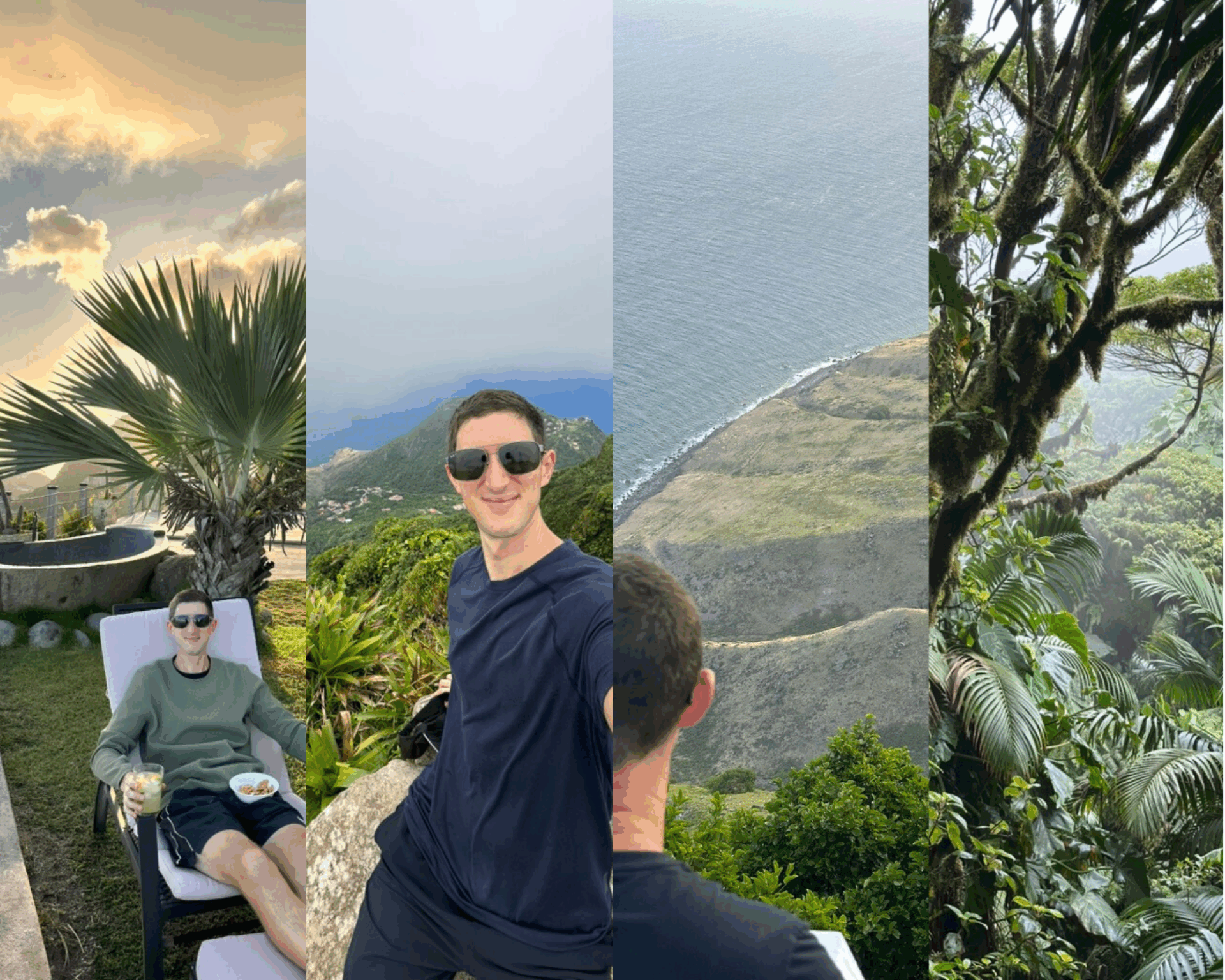If you’re craving a quieter kind of Caribbean experience — one without big resorts, cruise crowds, or noisy nightlife — this Saba travel guide is for you. Saba is a 5-square-mile volcanic island that feels more like a secret than a destination. With mist-covered peaks, world-class hiking, and some of the best diving in the region, it’s the kind of place where time slows down and nature takes over.
In this complete guide, I’m sharing my top tips for visiting Saba — including how to get there, when to go, what to expect, and how to plan your time. Whether you’re just coming for a Saba day trip or staying for a full week of slow travel, this is everything I wish I had known before my first visit. I’ve also linked out to more in-depth posts on getting around, where to stay, what to do, and how to make the most of your Saba island experience.
Find all my Saba travel guides here!
Table of Contents
What Makes Saba Island Unique & Why Visit?
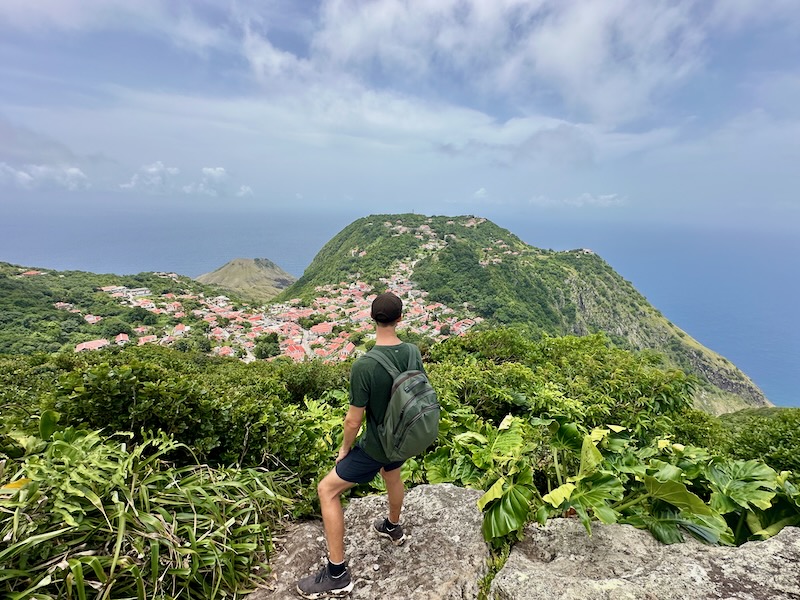
Saba isn’t your typical Caribbean island — and that’s exactly why it stands out. With no beaches, no chain hotels, and no cruise terminals, it offers a completely different rhythm of travel. The island is quiet, lush, and dramatic — rising steeply out of the sea with misty mountaintops, dense rainforest, and tiny villages clinging to the hillsides. If you’re looking for off-the-beaten-path adventure or space to truly unplug, this is the place.
What makes this Saba travel guide a bit different is that it’s designed for travelers who care about connection — to the landscape, to the local culture, and to their own pace. My best tips for visiting Saba start here: come with the intention to slow down, to hike, to breathe, and to appreciate the simplicity. You won’t find all-inclusive resorts here — but you will find handmade stone trails, warm community, and views that stay with you.
Best Time to Visit Saba

One of the most common questions in any Saba travel guide is when to go — and the answer really depends on your travel style. The island is a year-round destination, but different seasons offer different experiences. The dry season (December to April) is the most popular time to visit, thanks to cooler temperatures, clearer skies, and ideal trail conditions for hiking. This is also the best time for diving visibility, although you’ll share the island with more travelers.
The rainy season (late summer into fall) brings heavier cloud cover and the chance of tropical storms, but it also means solitude, lush green trails, and discounted accommodations. One of my biggest tips for visiting Saba is to be flexible. No matter when you go, the weather can shift quickly, especially in the higher elevations. That’s part of the charm — Mount Scenery can be shrouded in fog one moment and totally clear the next.
Saba Weather by Month
- December–April: Peak season. Dry weather, sunny skies, great for hiking and diving. Book early.
- May–June: Shoulder season. Warm but not too rainy. Fewer tourists and good trail conditions.
- July–October: Wet season. Afternoon showers and higher humidity. Best for quiet retreats.
- November: Transition month. Can be unpredictable, but often beautiful and green.
How to Get to Saba
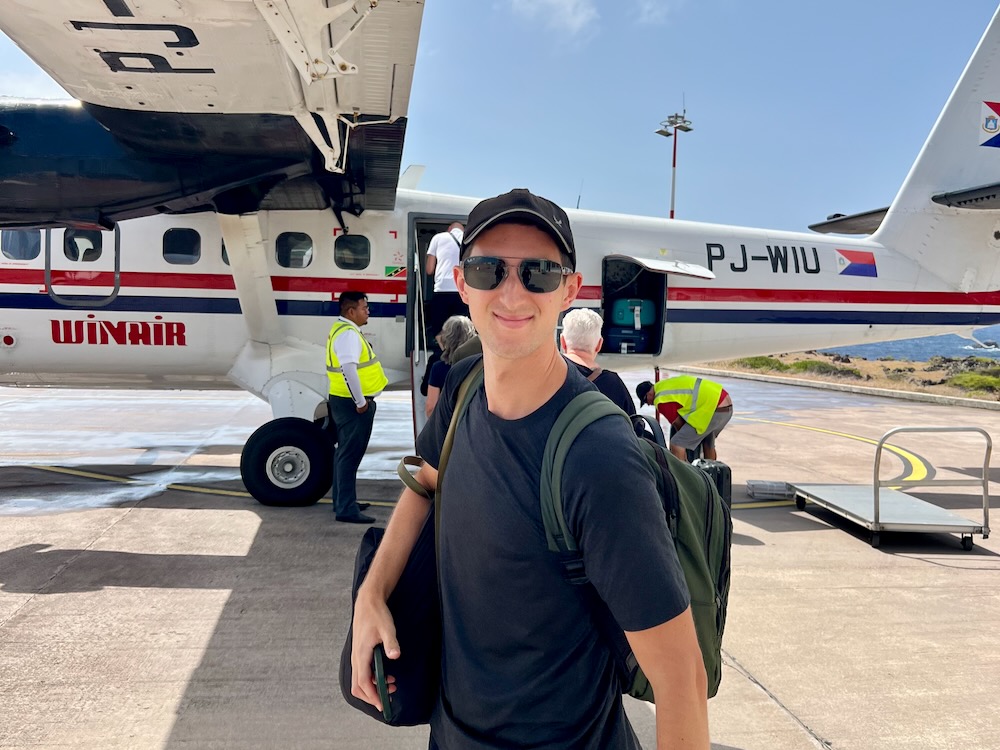
Getting to Saba is part of the adventure — whether you’re flying or taking the ferry, the journey is anything but average. From St. Maarten, you have two main options: take a short 12-minute flight on a small prop plane with WinAir, or hop on a ferry like Makana Ferry or The Edge. Both have their pros and cons, and which one you choose depends on time, budget, and how well you handle rough seas.
Learn more about how to get to Saba here!
If you’re flying, prepare for delays — the weather can change fast, and small aircraft can’t fly in poor conditions. That’s one of the most important tips for visiting Saba: always leave buffer time in your itinerary, especially when connecting to international flights. And if you’re prone to motion sickness, ferries can be tough — especially in winter when the seas are rougher.
Tips for Getting to Saba
- Fly from St. Maarten for the fastest option
WinAir flights take about 12 minutes and offer stunning views — plus, more time on the island if you’re visiting for just a day. You can book tickets here! - Ferries are more affordable but slower
The ride takes 90 minutes to 2 hours, and seas can be rough depending on the season. If you get motion sickness, be prepared. Book you ferry to Saba here! - Always build in buffer time for delays
One of the top tips for visiting Saba is to expect delays — weather can easily cancel or shift ferry and flight schedules. - Book round-trip in advance during high season
December to April is the busiest window. Flights and ferries fill up quickly, especially around holidays and weekends. - Bring your passport
While Saba is a special municipality of the Netherlands, U.S. travelers will need a valid passport to clear immigration in St. Maarten and again in Saba.
Where to Stay on Saba
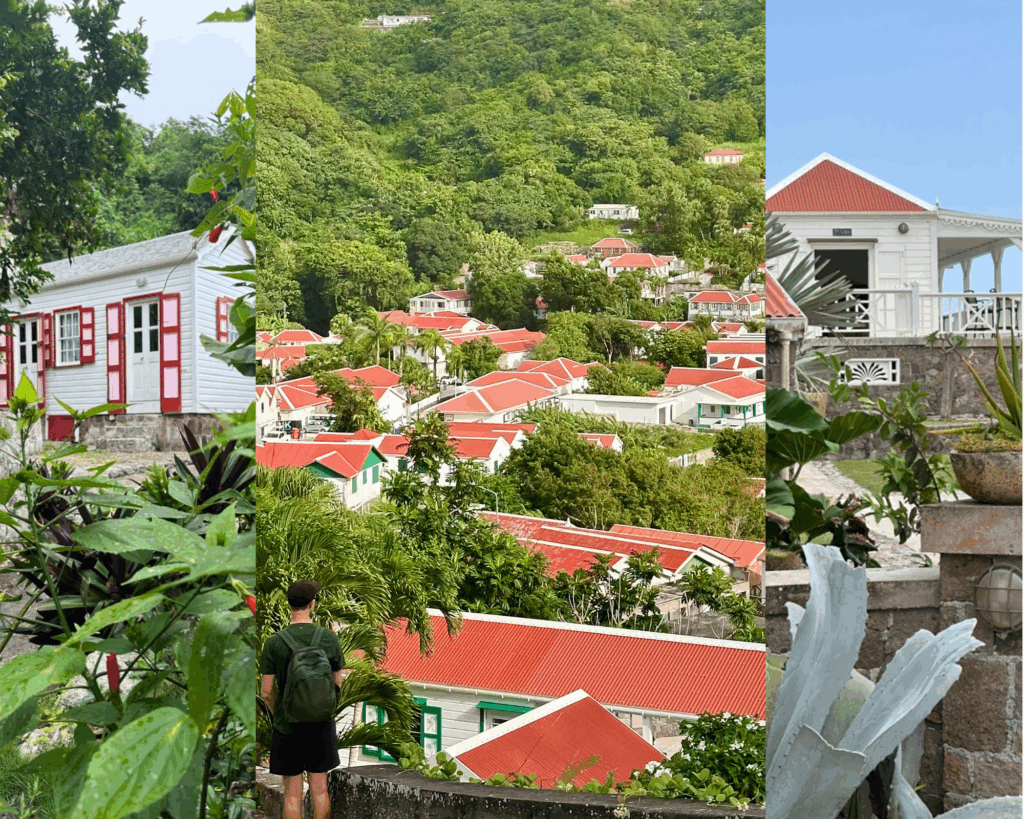
One of the best tips for visiting Saba is to choose your accommodation wisely — because where you stay shapes your entire experience. Saba is small, but each village has a distinct vibe. For most travelers, Windward Side is the ideal home base. It’s walkable, close to trailheads and restaurants, and has a laid-back, welcoming energy. You won’t find resorts or high-rise hotels here — think hillside villas, charming cottages, and guesthouses that feel like a true part of the landscape.
Find a great place to stay in Saba on Expedia!
While there are accommodations scattered across The Bottom and Zion’s Hill (also known as Hell’s Gate), I recommend staying in Windward Side for the best access to hiking, dining, and views. If you’re planning a Saba travel guide of your own someday, trust me — staying in the right place is half the magic.
Learn more about where to stay in Saba with this guide!
Villa Highlight: Spyglass Villa
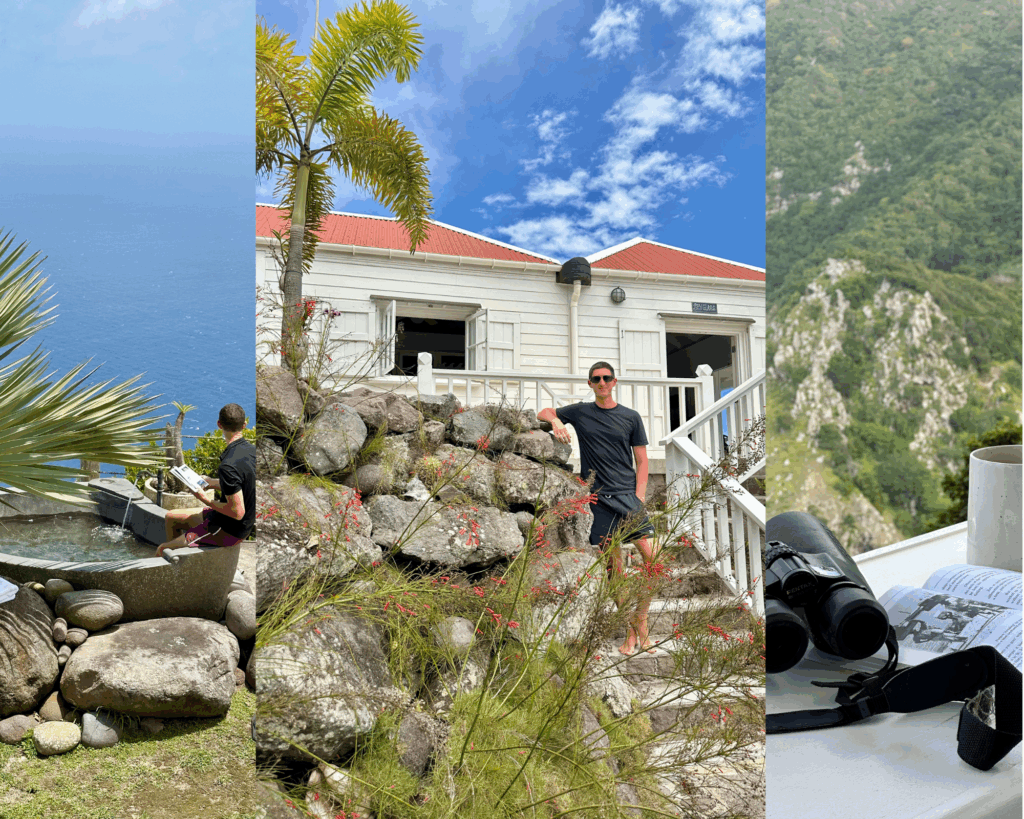
During my trip, I stayed at Spyglass Villa, and it genuinely transformed the experience. Perched on a ridge just outside of Windward Side, the villa looks out over the ocean on one side and the lush interior of the island on the other. It’s designed for relaxation — with huge windows, open-air living spaces, and panoramic views in every direction.
Here’s why it stood out:
- Luxury, but not pretentious — it blends comfort with nature.
- Incredible stargazing — the night skies here are unreal.
- Private and peaceful — perfect for solo travelers, couples, or digital nomads.
- Close to everything — just a few minutes’ walk or drive into Windward Side.
- Book your stay at Spyglass Villa here!
If you’re visiting Saba for more than a day, staying somewhere like Spyglass elevates the entire trip. It’s more than a place to sleep — it’s part of the experience.
Learn more about Spyglass Villa with my full review!
Other Recommended Places to Stay on Saba
If Spyglass isn’t available, or you’re after a different style, here are a few places I personally recommend based on experience and reputation:
- Juliana’s Hotel – A long-time favorite in Windward Side with friendly staff, cozy rooms, and easy access to dining, hiking, and shops. Great balance of comfort and location.
- The Cottage Club – Quiet, charming cottages surrounded by greenery. Ideal if you want space and privacy with a rustic island feel.
- The House on the Path – A unique and peaceful hideaway that feels like staying in someone’s beloved home — because it kind of is. Great for travelers looking for something authentic and offbeat.
No matter where you stay, your accommodation on Saba isn’t just a base — it’s part of the story. Choose a place that matches your pace.
Best Things to Do in Saba
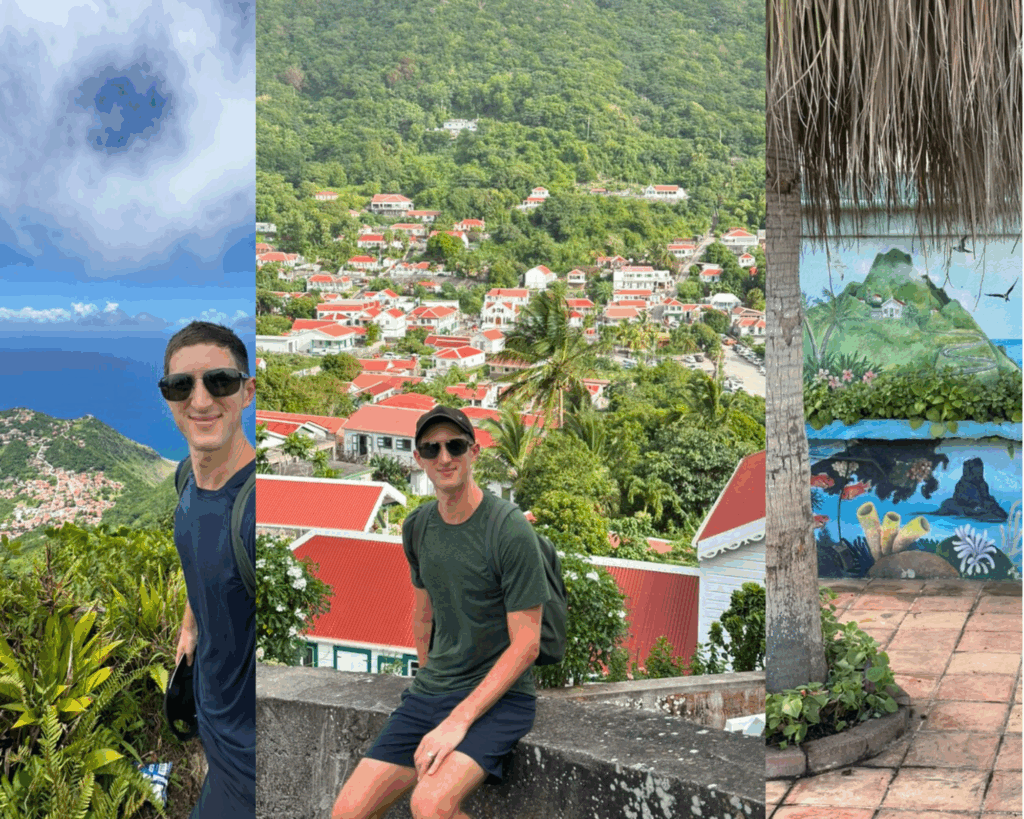
If you’re visiting Saba, you’re probably not here for the beach — and that’s exactly what makes the island so memorable. The best things to do in Saba revolve around nature, hiking, diving, and soaking up the quiet vibe of village life. This island rewards people who love the outdoors, enjoy good food, and aren’t in a rush.
Learn more about the best things to do in Saba with my full guide!
The full list of activities is in my dedicated post but here’s a quick look at the highlights:
- Hike Mount Scenery – The island’s most iconic trail. Foggy, steep, and totally worth it.
- Tackle the full island loop – Includes Sandy Cruz, Elfin Forest, Bottom Mountain, and more. A full-day adventure.
- Wander Windward Side – Grab coffee, browse local shops, or settle in for a drink with a view.
- Go diving or snorkeling – Saba Marine Park is world-renowned for its protected reefs and clarity.
- Visit The Bottom – Explore the island’s capital, check out historic architecture, and stroll The Ladder if you’re up for it.
- Watch planes land at Juancho E. Yrausquin Airport – The shortest commercial runway in the world. Seriously cool to see.
- Slow down and stargaze – Especially if you’re staying somewhere like Spyglass Villa. This is island time at its best.
One of my top tips for visiting Saba is this: don’t overschedule. Pick one or two big activities each day and leave space to enjoy where you are. Whether you’re here for a Saba day trip or a full week, the best moments tend to be the quiet ones.
Saba Itinerary Ideas

Whether you’re planning a quick Saba day trip from St. Maarten or you’re lucky enough to spend a full week on the island, it’s helpful to have a flexible plan. Saba’s not the kind of place where you want to over-schedule — the best trips here include time for wandering, spontaneous hikes, and simply enjoying the view.
Here’s a quick breakdown of what you can do with different amounts of time. For the full post with detailed day-by-day plans, check out my full blog post here!
- 1 Day – Hike Mount Scenery, grab lunch in Windward Side, and explore the village before heading back. A Saba day trip gives you just enough to fall in love.
- 3–4 Days – Tackle the full hiking loop, visit The Bottom, try local restaurants, and (if you dive) hit the water. Great for nature lovers and active travelers.
- 5–7 Days – Add in slower mornings, unstructured time, and a few villa days. With a week, you can really get into the rhythm of island life.
No matter how long your Saba itinerary is, my biggest advice is to move slow and leave room for the unexpected. The island’s small, but the experience is big — especially if you don’t try to cram it all in at once.
Find the best Saba itinerary for your trip here!
Cost of Visiting Saba
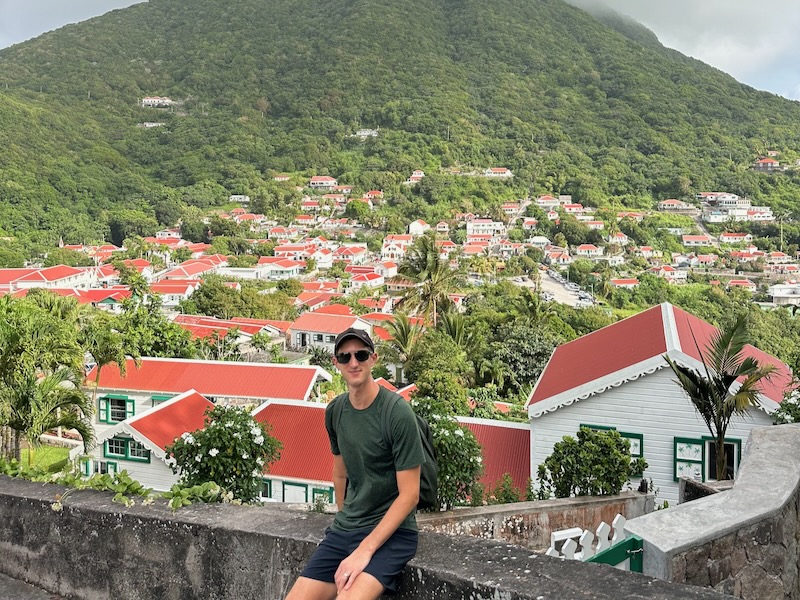
One of the most common questions I get while sharing this Saba travel guide is: “How much does it cost to visit Saba?”The truth is, it’s not the cheapest island in the Caribbean — but that’s because it doesn’t try to be. There are no resorts or mass tourism here. Instead, you’ll find boutique hotels, hillside cottages, and a quiet, slow rhythm that’s worth every dollar.
That said, it’s important to go in with realistic expectations. One of my biggest tips for visiting Saba is to plan your budget around how you want to experience the island. If you want to hike, eat local, and relax in nature, it doesn’t have to break the bank. But if you’re coming for diving, villas, and full comfort, costs will climb.
Average Daily Budget for Saba
- Budget Traveler: $125–$175/day
- Stay at The Cottage Club or a small guesthouse
- Hike for free, eat casual local meals, and limit excursions
- Mid-Range Traveler: $200–$300/day
- Mix of guided hikes, dining out, and a central hotel like Juliana’s
- Great for people following this Saba travel guide who want balance
- Luxury/Splurge: $350–$600+/day
- Private villa (like Spyglass), personal tours, upscale meals, and full relaxation
- Perfect for special occasions or couples looking to really disconnect
Tips for Visiting Saba on Any Budget
- Use U.S. dollars — no need to exchange currency.
- Bring cash — some restaurants, taxis, and shops are cash-only.
- ATMs are available — but not always reliable; have a backup plan.
- Tipping is expected — especially for tours, drivers, and meals.
- Plan for quality, not quantity — Saba is small but rich in experience. Focus on fewer, better moments — it’s what this entire Saba travel guide is built around.
Travel Tips for Visiting Saba Island
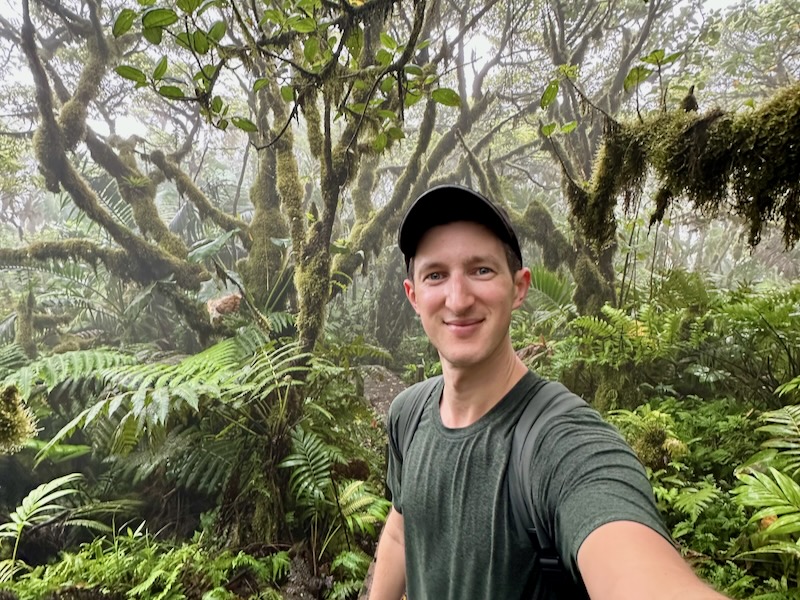
If there’s one thing this Saba travel guide aims to help you with, it’s showing up prepared — not just with the right gear, but the right mindset. These practical tips for visiting Saba will help you settle into the island’s rhythm and avoid common first-time traveler mistakes:
- Get connected with Airalo eSIMs
There’s no major cell service brand on Saba, so using an eSIM like Airalo makes it easy to stay connected without hunting for Wi-Fi. It’s one of my top tips for visiting Saba island if you’re coming from abroad. Get your e-SIM here! - No need to rent a car — hitchhiking is common
Locals regularly give rides, and it’s considered safe and normal here. This isn’t just convenient — it’s a great way to meet people. Just be respectful, offer a thank you (and maybe a few bucks), and go with the flow. - Pack real hiking shoes
Trails like Mount Scenery and Sandy Cruz aren’t flip-flop friendly. Saba is a hiker’s paradise, and good gear makes all the difference. Every legit Saba travel guide should start with this one. - Bring lightweight layers for rapidly changing weather
You can start a hike in sunshine and be in dense fog 30 minutes later. One of my key tips for visiting Saba is to always pack a rain jacket or light shell in your day bag. - Be prepared to slow down — things take time here
This isn’t a place where you rush from activity to activity. Restaurants take longer, ferries may be delayed, and shops open when they feel like it. That’s the beauty of it. If you’re using this Saba travel guide to plan your trip, plan loose. - Pack bug spray and reef-safe sunscreen
You’ll be outdoors a lot — and while mosquitos aren’t overwhelming, they do show up. Sunscreen is a must for hiking and snorkeling, especially with the strong Caribbean sun. - Dress respectfully in town
Saba is relaxed, but not resort-y. Locals appreciate modesty in restaurants and public spaces. Think casual but not beachwear unless you’re diving. - Carry some cash, even if you use cards
U.S. dollars are widely accepted, but some restaurants and drivers are cash-only. Always good to have $50–$100 on hand. - Be open to doing less, better
It’s not about checking off a long list. Whether you’re here for a Saba day trip or a full week, your best memories will come from unplanned moments — a local conversation, a foggy summit, a quiet night under the stars.
Quick Things to Know Before You Visit Saba
Whether you’re planning a long stay or just a Saba day trip, here are a few essential facts to help you prepare. This section sums up some of the most practical details from this Saba travel guide — especially helpful if it’s your first time visiting.
- Currency: U.S. dollars are the official currency. No exchange needed if you’re coming from the States.
- Cards vs. Cash: Cards are accepted at most hotels and restaurants, but carry cash for taxis, tips, and small shops.
- Language: English is the most widely spoken language, even though Saba is a Dutch island. Communication is easy.
- American Influence: The island has strong U.S. ties — you’ll hear American accents, see U.S. brands, and the overall vibe is familiar.
- Groceries: There are two main grocery stores in Windward Side. They’re well-stocked but prices are high due to imports.
- Tipping Etiquette: A 10–15% tip is appreciated at restaurants. Tip local guides, drivers, and villa staff for good service.
- Island Time Is Real: Businesses may open or close unpredictably. One of the best tips for visiting Saba is to be flexible — it’s part of the charm.
This is a destination that rewards curiosity and patience. If you’re still deciding when to go, how to get there, or what to pack, the rest of this Saba travel guide has you covered.
Final Thoughts – Saba Is One of the Caribbean’s Best-Kept Secrets
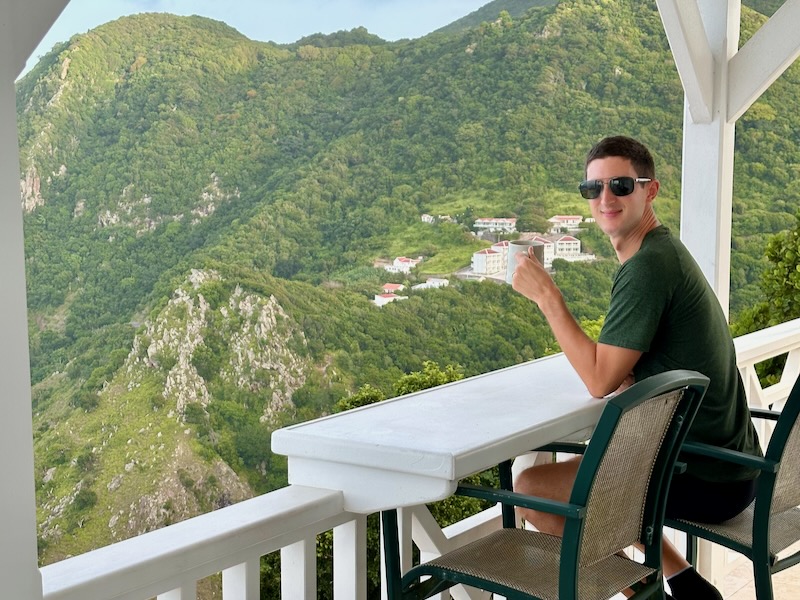
Writing this Saba travel guide reminded me why this island stuck with me so deeply. Saba isn’t flashy, and that’s exactly the point. It’s a place where time stretches, where the air feels cleaner, and where your biggest decision might be whether to take a second coffee before a hike.
If you’re still wondering whether it’s worth the trip — it is. Even if you only have time for a quick Saba day trip, the experience can leave a real mark. And if you’re lucky enough to stay longer, lean into the quiet. Embrace the trails, the views, and the way the island asks you to pay attention.
No matter how you travel, I hope these tips for visiting Saba help you plan better, worry less, and experience more. And if you’re still building your itinerary, be sure to check out my other Saba posts — they’re all linked throughout this guide for easy reference.
FAQs About Visiting Saba
Is Saba worth visiting?
Absolutely. Saba is one of the most unique islands in the Caribbean — no beaches, no cruise crowds, no big resorts. This Saba travel guide is built for travelers looking to hike, dive, and disconnect. If you love nature, slow travel, and authenticity, Saba is 100% worth the trip.
What should I know before going to Saba?
One of the best tips for visiting Saba is to expect simplicity. The island runs on a slower pace. Weather delays are common, service is often slower, and shops open when they feel like it. Bring layers, good shoes, and an open mind — that’s the Saba way.
Do I need a passport to visit Saba?
Yes. Even though Saba is part of the Netherlands, U.S. travelers will need a valid passport to enter via St. Maarten (the common entry point). Always check the latest entry requirements before traveling.
What’s the best month to visit Saba?
December to April is the best time to visit for hiking and diving — this is Saba’s dry season, with cooler temps and clear skies. If you’re planning your trip with this Saba travel guide, I recommend avoiding hurricane season (August–October) unless you’re comfortable with some weather uncertainty.
How do I plan a trip to Saba island?
Start by deciding how long you’ll stay. A Saba day trip is totally doable from St. Maarten, but 3–5 days gives you time to hike, explore the villages, and slow down. Use this Saba travel guide to figure out where to stay, what to do, and how to get there.
Is Saba expensive for tourists?
It’s not cheap — but it’s not over-the-top either. Expect to spend $150–$300 per day depending on how you travel. One of the top tips for visiting Saba is to budget for quality over quantity. You won’t find a ton of things to spend money on, but the value is in the experience.
What should I pack for Saba?
Good hiking shoes, a light rain jacket, reef-safe sunscreen, bug spray, and comfortable activewear. Check out the packing section in this Saba travel guide for more detailed tips based on the island’s weather and terrain.
Is Saba safe to travel alone?
Yes — Saba is one of the safest islands in the Caribbean. Locals are friendly, crime is low, and it’s common to see solo hikers out on the trails. Solo travelers will find the island welcoming, especially if you stay in Windward Side and connect with locals.
Can I use U.S. dollars in Saba?
Yes, the U.S. dollar is the official currency of Saba, so there’s no need to exchange money. Just bring some cash — not every place accepts cards, and ATMs aren’t always reliable.
What makes Saba different from other Caribbean islands?
Saba is all about nature, not nightlife. There are no beaches, malls, or big resorts — just trails, views, and a tight-knit community. This Saba travel guide exists because it’s one of the few places left in the Caribbean where things still feel real.

